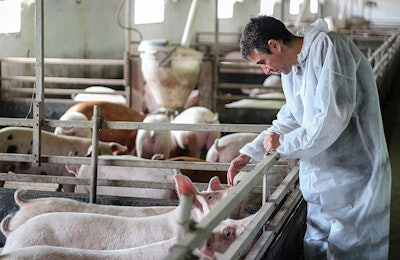
New criteria would increase the number of antibiotics considered critical to human health
A new proposal by the U.S. Food and Drug Administration (FDA) to change classification criteria for antibiotics would increase the number considered critical to human health, and thus subject to greater restrictions when used in animals.
The new proposal, the first update to the ranking of antibiotics since 2003, calls for the simplification of classification criteria by eliminating the ranking’s original emphasis on foodborne pathogens, according to Ruby Singh, a microbiologist in the Office of New Animal Drug Evaluation at the FDA’s Center for Veterinary Medicine. Consequently, Dmitri Iarikov, deputy director of the FDA’s Office of Infection Diseases, said more antibiotic drugs will receive the “critical” classification that comes with additional restrictions on veterinary use.
The ranking proposes to classify 17 antibiotics as “critically important,” 15 as “highly important” and 3 as “important.” Instead of the five-factor criteria established in 2003, under the new process, drugs that are considered to be the sole or one of limited therapies available for serious human infections will be considered critically important, while drugs that are not used to treat serious infections or are one of many treatment options will be considered simply important. Highly important drugs may be either one of limited available therapies for a non-serious disease, or one of many options to treat a serious infection.
During a public comment session on November 16, participants praised the FDA for updating its ranking procedure in a way that will bring the U.S. in line with international standards.
“Overall, in our view, the agency’s proposal represents a substantial improvement,” said David Hyun, director of The Pew Charitable Trusts’ Antibiotic Resistance Project.
However, Hyun, alongside other speakers, encouraged the agency to be more transparent about the reasons for decisions made regarding individual drugs.
“It should be very transparent and available to everyone to understand the reasons behind the classification,” said James Kincheloe, Food Safety Campaign Manager at the Center for Science in the Public Interest.
Madeleine Kleven, director of the Food Animal Concerns Trust’s Food Safety Program, said the trust had concerns about aspects of the new criteria that remained vague and could lead to problems in the categorization of antibiotics. For example, she said, the FDA concept paper describing the criteria does not spell out what it means for a drug to be the sole or limited option for treating a disease.
Other animal agriculture groups also expressed concern that the criteria does not take the importance of animal health into account.
“There is no disagreement that maintaining the efficacy of antibiotics is important to all,” said Dave Hermes of the National Turkey Federation. “However, as the concept paper stands right now, we have some concerns. … We do not believe we should unnecessarily remove options for veterinarians, so we urge the FDA to more thoroughly describe categories.”
The speakers also discussed the need for a formalized review process, to take place every 3-5 years, to ensure the FDA’s antibiotic ranking does not become out of date again in the future.
The FDA is accepting comments on the concept paper criteria through January 15, 2021, via www.regulations.gov.















